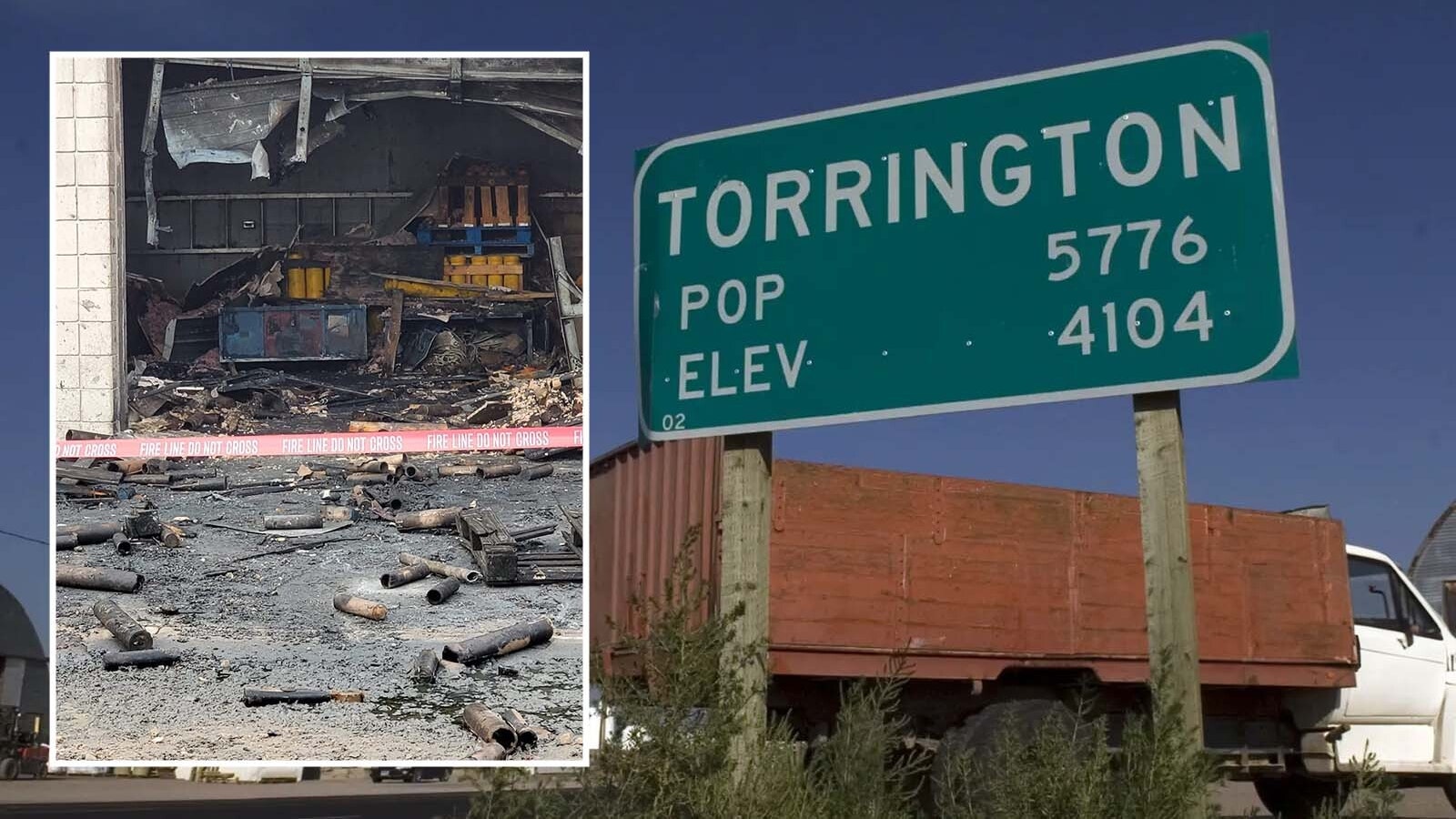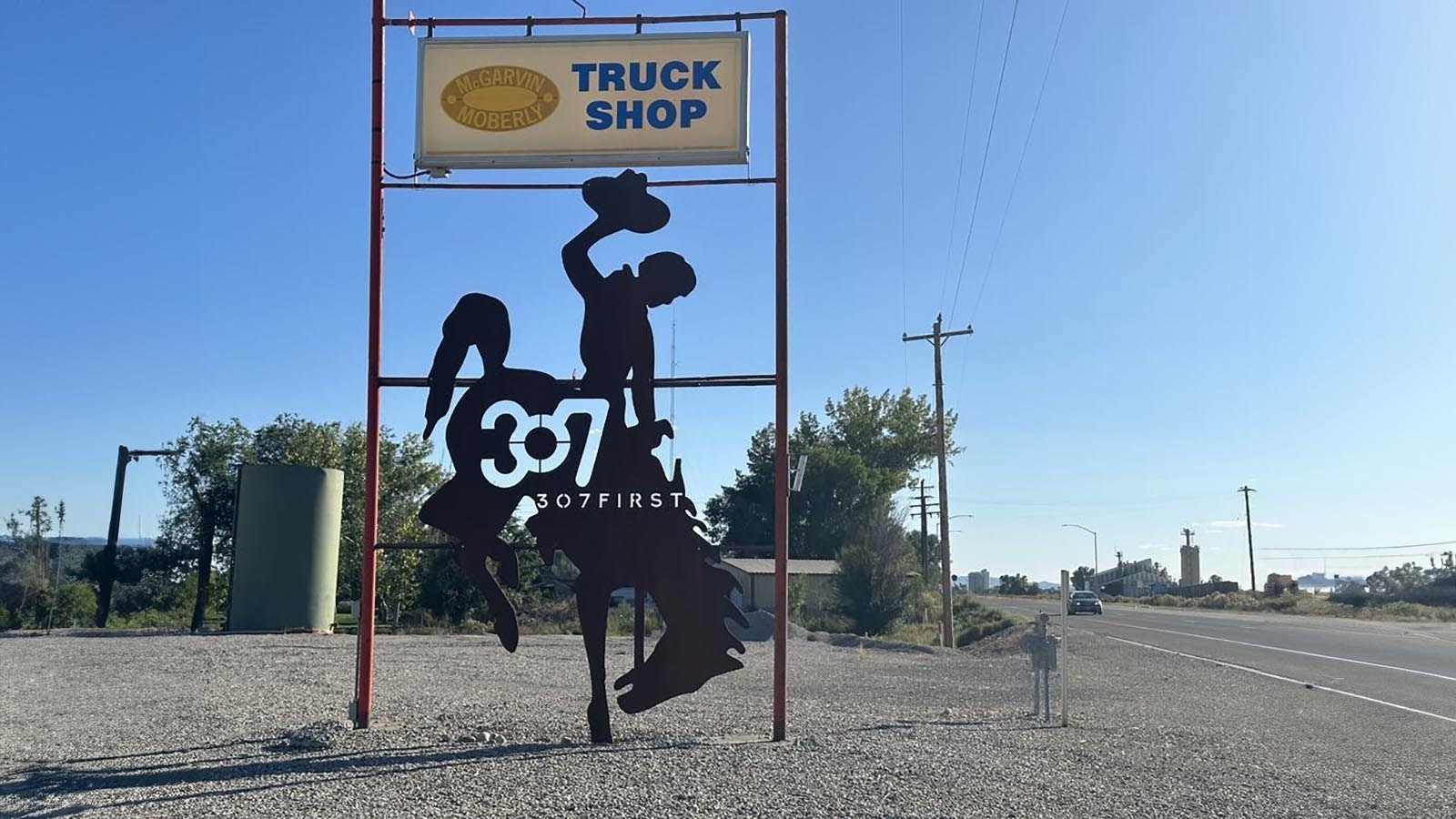Folks in Wyoming and across the country like to collect all sorts of old military weapons and equipment, but a rocket with nuclear capabilities seems a bit extreme.
“I’ve moved a lot of things like inert bazookas,” Scott Weber, owner of Gunrunner Firearms & Auctions in Cody, told Cowboy State Daily.
But a rocket capable of firing a nuke?
“Probably not. That sounds like something really weird,” he said.
Nuke Scare In Washington State
Authorities in Bellevue, Washington, were shaken up recently when a man called the Air Force Museum there and offered to donate a rocket with nuclear warhead capabilities.
He said the rocket had come to him by way of his late neighbor, who in turn had claimed to have bought it at an estate sale, according to news reports.
Bomb technicians sent to the scene were relieved to discover that the rocket wasn’t functional and didn’t have any fuel in it — and it wasn’t armed with a nuclear warhead.
It’s not impossible that a civilian would legally posses such a rocket – provided, of course, that it had been disabled from being able to fly. And most importantly, if the warhead wasn’t included, Col. Tucker Fagan (ret.), former commander of F.E. Warren Air Force Base in Cheyenne, told Cowboy State Daily.
“It’s not so wild and crazy that somebody had one,” he said. “But did it go through DRMO (Defense Reutilization Marketing Office)? I don’t know.”

Definitely An Older Model
The rocket in question was a Douglas AIR-2 Genie, which Fagan said dates back to the late 1950s.
“I think the Genies were all retired when I joined the Air Force in 1968,” he said.
They were a rather crude weapon, designed as an air-to-air rocket capable of carrying a 1.5-kiloton nuke. That’s rather small, as far as nukes go.
By way of comparison, the “Little Boy” atomic bomb dropped on Hiroshima yielded an estimated 16-kiloton blast.
The largest explosion ever set off by U.S. military – the Castle Bravo thermonuclear test – was an apocalyptic 15 megatons. And even that was a mere firecracker compared to the Soviet Union’s Tsar Bomba test, which yielded 50 megatons and shattered windows hundreds of miles away.
The Genie nuclear rockets were intended to lay waste to enemy aircraft formations, should the Air Force have found itself engaged in large-scale air-to-air combat, Fagan said.
“They had no guidance system, so I’m not sure how you would have used something like that. Just throw it out in the sky and hope you knock something down,” he said.
Dan Starks, founder of the National Museum of Military Vehicles in Dubois, said he hasn’t heard of any particularly unusual old military equipment being found in Wyoming.
However, he’s familiar with the Genie air-to-air nuclear rocket. He has a non-functioning replica of one.
“It’s in storage right now, but as soon as we can figure out a spot for it, we’ll put it on display,” he said.
Decommissioned Missiles Are A Thing
Decommissioned inert missiles, rockets, artillery shells and other such things are legal for civilians to own, Fagan said.
For example, the community of Kimball, Nebraska, for years had an inert nuclear-capable ballistic missile filled with cement on display in its city park, he said.
Whenever an Air Force base upgrades any equipment or weapons system, the older models might be sent to the base’s DRMO.
They will probably first be offered to other military bases. If there are no takers, then they might be put up for sale — provided, of course, that weapons systems have been fully disabled.
So, the nuclear-capable rocket the ended up in Bellevue might have come through a DRMO at some point, Fagan said. Or, a service member might have been authorized to take the fully disabled weapon home, if it had just been sitting around taking up space in a warehouse somewhere.
Old Weapons Galore
There’s a huge market for inert military weapons such as bazookas, small rockets, dummy grenades and machineguns, Weber said.
His operation in Cody handles mostly vintage Old West firearms, but his Ohio warehouse specializes in military novelties.
Civilians may own a huge variety of old military weapons with no special license, so long as they are completely disabled from ever being able to fire again, he said.
Once they’re completely disabled, the weapons are legally considered “a non-gun, non-ordinance piece,” he said.
“I deal in a lot of them, especially bazookas and LAW (light anti-tank weapon) rockets from around the world,” he said.
“The LAWs rockets are a one-shot and discard weapon. The bazookas have to be rendered inert. The most poplar method of doing that – the one the ATF (Bureau of Alcohol, Tobacco, Firearms and Explosives) likes best – is to drill a hole in the tube,” he said.
Inert bazookas usually go for a few hundred bucks and people like them as novelties, Weber said.
“You can hang one up in you man cave, you can hand them over a bar or something like that,” he said.
And although he’s seen plenty of disabled smaller rocket-type weapons come and go, Weber said he’s yet to see something like a disabled full-sized air-to-air nuclear rocket come up for auction.
‘Holy Sh*t, That’s A Live Grenade’
Many of the most popular vintage weapons were collected as “the spoils of war” by U.S. troops during World War II, he said. Back then, it was fairly easy for GIs to get authorization to take enemy weapons home with them.
It became tougher to snag weapons and gear from the battlefields in Vietnam. And by the time of more recent conflicts in the Middle East, American troops were essentially forbidden from keeping enemy weapons for themselves, Weber said.
He and his employees love going on “treasure hunts” for old military gear stashed in veterans’ houses all over the country, Weber said.
In most cases, the weapons have been properly disabled. But not always.
“Here’s the deal with military widows. They’ll tell you, ‘I don’t know what my husband had down there in the basement,’” he said. “So, you’ll go down there and it’s like, ‘Holy sh*t, that’s a live grenade.’”
“We’ve found German grenades, Japanese grenades, U.S. grenades,” he said.
And they’re nothing to trifle with. Live ordinance that’s been sitting around since World War II can be incredibly unstable, so standard protocol is to get away immediately, Weber said.
“If it’s a live grenade, we get everybody out of the house and call the ATF or the local city bomb squad, and they come running,” Weber said.
Mark Heinz can be reached at mark@cowboystatedaily.com.





